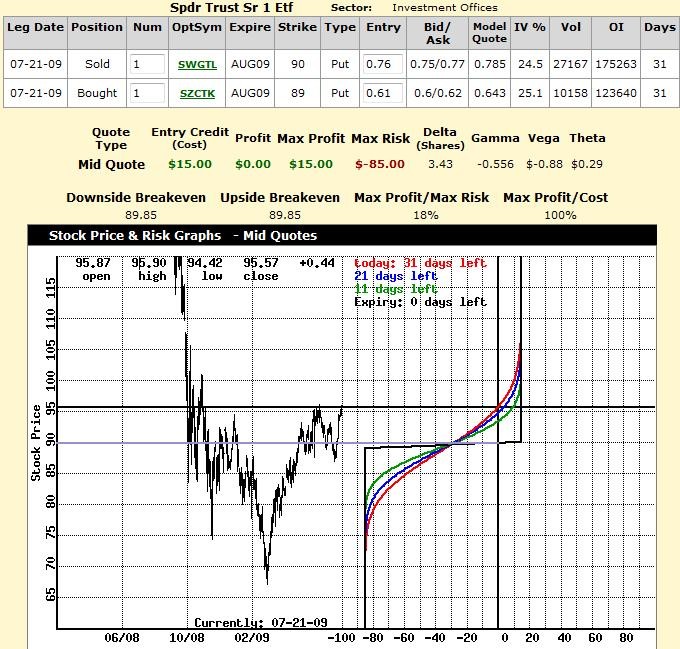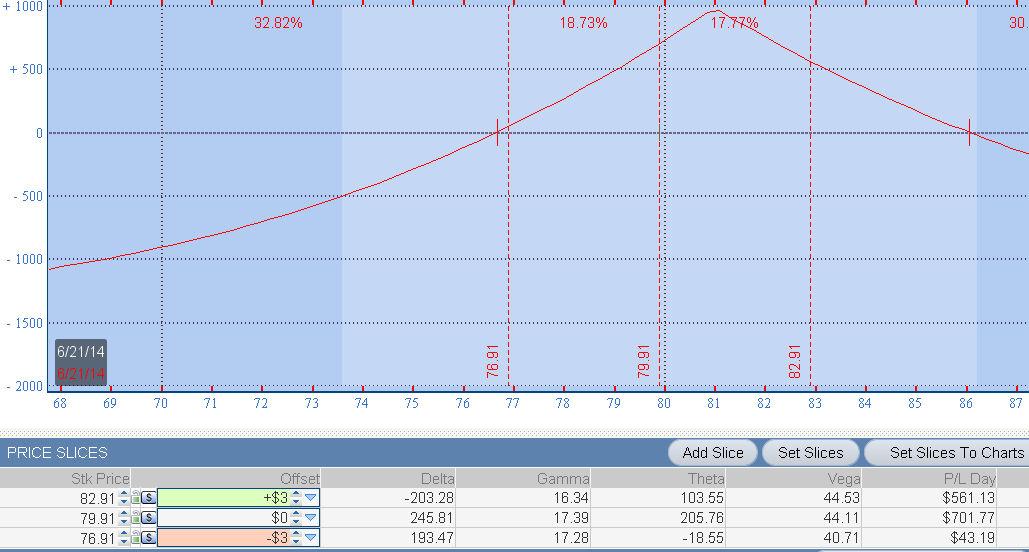Market Crash Protection For Credit Spreads Using SPY options
Post on: 26 Май, 2015 No Comment

by Lee Finberg Comments Off
A white paper by Lee Finberg (SaferTrader.com/The Monthly Income Machine )
This white paper article focuses on how risk-adverse income investors can establish real market crash protection for their bullish option credit spread positions though proper use of SPY puts.
In an earlier white paper* (Flash Crash Can Options Help Avoid Damage? ) of this how-to series, I discussed several powerful techniques for using option positions to protect a stock portfolio in the event of a flash crash.
In this article, we cover a technique whereby option income investors can use selected SPY options to protect bullish option positions specifically bull put credit spreads — from a widespread general market crash.
While a misbehaving option credit spread more often than not does so because of headline events specific to the underlying stock, ETF, or Index, sometimes the adverse move is the result of a market storm swamping all boats. This how-to discussion will focus on managing bull put credit spread risk in the event of a market-wide crash.
Market Corrections Are Inevitable
It’s difficult to watch the stock market during an nearly uninterrupted march to repeated new highs without thinking about the inevitability of some degree of major market correction looming over the horizon.
Bulls may whistle past the graveyard, soothing themselves with references to the fact that a possible “healthy correction” would be a welcome development.
Bears defiantly point toward “overbought” indicators and insist market sanity will surely be restored at some point and the bubble will burst; the spectacular rise and equally stunning end to the Dutch tulip craze of 1637 is cited ad nauseam to support the contention.
For risk-adverse option credit spread practitioners, a rational tactic for dealing with a potential market meltdown will be more useful than either bullish self-hypnosis or bearish hand wringing.
We address the issue in various ways in The Monthly Income Machine and “white papers”* by discussing practical steps for protecting our credit spread positions using rigorous position entry criteria, risk-limiting stop loss orders, extra “long” options included in the credit spread, etc.
When the Correction is a Market Crash
Joe in Texas, a member of our SaferTrader community, uses an intriguing technique to provide what he calls “Deep Protection” … insuring his put credit spreads against a sky-is-falling eventuality.
Here is a review of that approach to market crash protection using SPY put options as portfolio insurance. To me, this qualifies as a mathematically and strategically rational tactic to protect a “long” portfolio of stocks, or bullish option positions like put credit spreads, from a potential major market swoon.
Assumptions for Deep Protection of an Account
- A $150,000 portfolio containing 10 put credit spreads, in 10 underlyings, each with a 10 point interval between strike prices, requiring $100,000 of available margin. (The validity of this approach is not dependent on operating a large account and so could be applied to most accounts employing multiple credit spread positions.)
Nominal credit spread profit is a (minimum) $0.25 net premium per option spread, or $250 for each $10,000 margin requirement.
Based on the foregoing assumptions, monthly yield (excluding commission cost) would be $2,500 for all 10 credit spread trades, or 2.5% per month return on margin. Less, if only some of the trades go wrong; more with Iron Condors or spreads sporting better than $0.25 net premium income.
MRA (maximum risk amount) assumed to be acceptable is a loss of 2.0 times collected net premium on each credit spread, i.e. $500 loss/trade. Therefore, exit point if stopped out of all positions at MRA, represents an adverse move of $750 per spread or $7,500 for the entire portfolio. (A $750 adverse move in net spread premium minus $250 premium collected up front = $500 loss.)
Assuming that the trades were each placed with the short leg strike price being 15% above the price of the underlying, stop out exit points would be triggered at a
7.5% to 10% adverse move.
Goal: Market Crash Protection for Credit Spreads
Outright purchase of selected SPY puts can dramatically reduce MRA risk if the market slides 7.5% to 10% overall, and takes out all investors put credit spread stops.
The conservative investor might consider a monthly SPY PUT purchase that zeros out the potential slip of the market not protecting the entire $100,000 portfolio, but just the MRA of $5,000 ($7,500 exit point, less the $2,500 collected premium.)

For example, with the SPY at 179.5 on 12/16/13, we look at Januarys puts and see that the put options with a strike price of 166 (which are 7.5% from the trading price of the underlying SPY at the time) cost $0.50 each.
Potential results: 10 SPY put options would cost $500 plus commissions. If the overall market were to fall 7.5% to 166 quickly, at-the-money PUTS for the SPY would be trading at roughly $3.00 at the bid/ask midpoint.
Those same 10 SPY put options would therefore profit $3,000, making up for more than half of the potential loss if all the original put credit spreads were stopped out.
Going down 10% from 179.5, puts at the 161 strike price were $0.25 each. 10 would cost $250, 20 for $500. If traded ATM (at-the-money) for $3.00, the 20 SPY puts would produce
$6,000 profit and thus completely offset an otherwise bad day by making up more than the loss on the bull put credit spreads.
Using a back month SPY put to protect front month MRA will reduce initial overall portfolio yield, but can save your bacon if and when the sky falls!
Conclusion
Employing a calculated, specific number of at-the-money SPY put options to protect the at-risk portion of a credit spread portfolio can be a very effective insurance policy against major bull put credit spread losses in a market crash.
It goes without saying that employing this technique requires an additional expense in purchasing the put insurance, which reduces return on investment during the vast preponderance of months when no market collapse occurs.
That, of course, is the nature of insurance. We don’t want to collect on it… but it’s there just in case. To quote Mighty Mouse: it’s “here to save the day.” (If you are too young to “get” the reference to the Saturday matinee cartoon character Mighty Mouse and his famous slogan, we understand and will not hold that against you.)
The point is that while an actual market crash (not a simple correction) is very infrequent, a real threat to overall profitability of a credit spread investing program is failure to provide for true market crash protection.
*Other recent “white papers” associated with stock, ETF, and option credit spread risk management :














